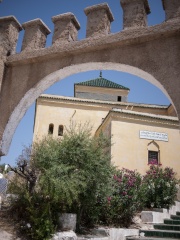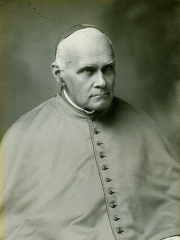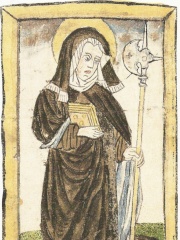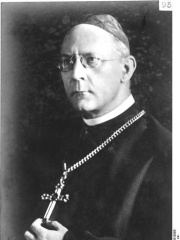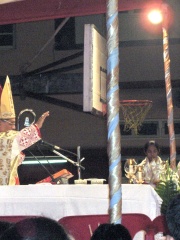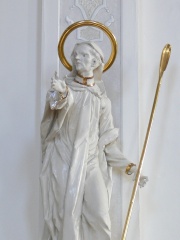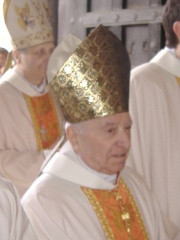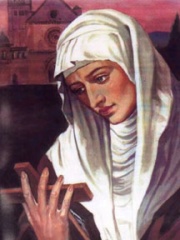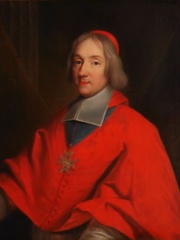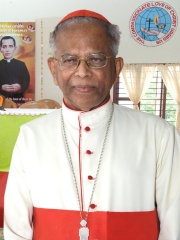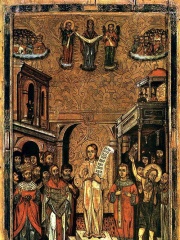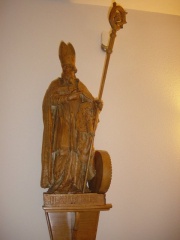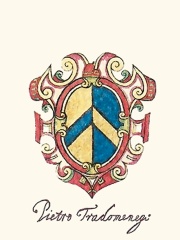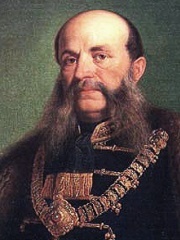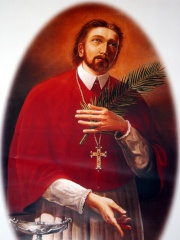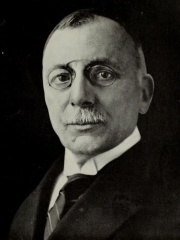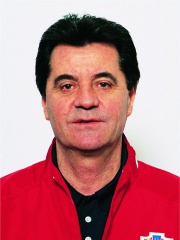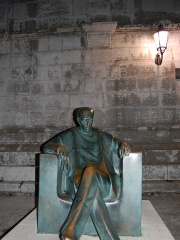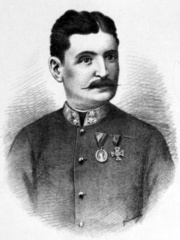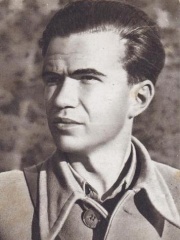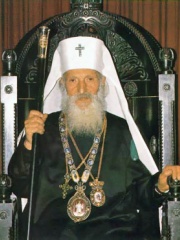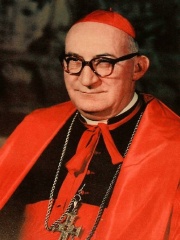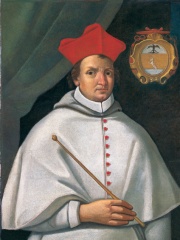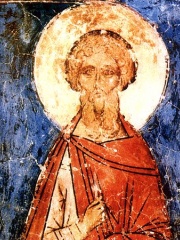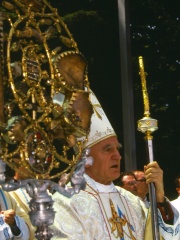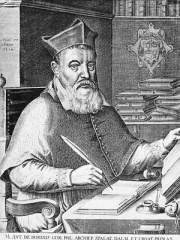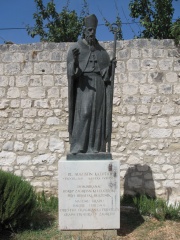RELIGIOUS FIGURE
Maximianus of Ravenna
499 - 556
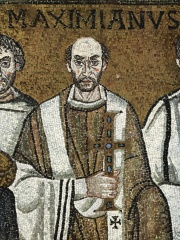
 Maximianus of Ravenna
Maximianus of Ravenna
Maximianus of Ravenna, or Maximian (499 – February 22, 556; feast day formerly February 21) was bishop of Ravenna in Italy. Ravenna was then the capital of the Byzantine Empire's territories in Italy, and Maximianus's role may have included secular political functions. Read more on Wikipedia
His biography is available in 18 different languages on Wikipedia (up from 17 in 2024). Maximianus of Ravenna is the 1,822nd most popular religious figure (down from 1,419th in 2024), the 137th most popular biography from Croatia (down from 109th in 2019) and the 13th most popular Croatian Religious Figure.
Memorability Metrics
Page views of Maximianus of Ravenna by language
Among RELIGIOUS FIGURES
Among religious figures, Maximianus of Ravenna ranks 1,822 out of 3,187. Before him are Albert Vanhoye, Abu Bakr ibn al-Arabi, Louis Billot, Henri Schwery, Wiborada, and Adolf Bertram. After him are Ivan Dias, Herman I of Baden, Luigi Poggi, Agnes of Assisi, Louis Antoine de Noailles, and Varkey Vithayathil.
Most Popular Religious Figures in Wikipedia
Go to all RankingsAlbert Vanhoye
1923 - 2021
HPI: 61.68
Rank: 1,816
Abu Bakr ibn al-Arabi
1076 - 1148
HPI: 61.68
Rank: 1,817
Louis Billot
1846 - 1931
HPI: 61.68
Rank: 1,818
Henri Schwery
1932 - 2021
HPI: 61.67
Rank: 1,819
Wiborada
900 - 926
HPI: 61.67
Rank: 1,820
Adolf Bertram
1859 - 1945
HPI: 61.67
Rank: 1,821
Maximianus of Ravenna
499 - 556
HPI: 61.66
Rank: 1,822
Ivan Dias
1936 - 2017
HPI: 61.66
Rank: 1,823
Herman I of Baden
1040 - 1074
HPI: 61.66
Rank: 1,824
Luigi Poggi
1917 - 2010
HPI: 61.65
Rank: 1,825
Agnes of Assisi
1197 - 1253
HPI: 61.65
Rank: 1,826
Louis Antoine de Noailles
1651 - 1729
HPI: 61.65
Rank: 1,827
Varkey Vithayathil
1927 - 2011
HPI: 61.64
Rank: 1,828
Contemporaries
Among people born in 499, Maximianus of Ravenna ranks 1. After him is Ingund. Among people deceased in 556, Maximianus of Ravenna ranks 2. Before him is Romanos the Melodist.
Others Born in 499
Go to all RankingsMaximianus of Ravenna
RELIGIOUS FIGURE
499 - 556
HPI: 61.66
Rank: 1
Ingund
RELIGIOUS FIGURE
499 - 546
HPI: 57.99
Rank: 2
Others Deceased in 556
Go to all RankingsRomanos the Melodist
RELIGIOUS FIGURE
490 - 556
HPI: 69.91
Rank: 1
Maximianus of Ravenna
RELIGIOUS FIGURE
499 - 556
HPI: 61.66
Rank: 2
In Croatia
Among people born in Croatia, Maximianus of Ravenna ranks 137 out of 700. Before him are Quirinus of Sescia (300), Pietro Tradonico (750), Ivan Mažuranić (1814), Bernard Vukas (1927), Marko Krizin (1589), and Ante Trumbić (1864). After him are Mirko Jozić (1940), Petar Nadoveza (1942), Jakov Gotovac (1895), Josip Runjanin (1821), Željko Čajkovski (1925), and Ivo Lola Ribar (1916).
Others born in Croatia
Go to all RankingsQuirinus of Sescia
RELIGIOUS FIGURE
300 - 309
HPI: 62.03
Rank: 131
Pietro Tradonico
POLITICIAN
750 - 864
HPI: 62.02
Rank: 132
Ivan Mažuranić
WRITER
1814 - 1890
HPI: 61.98
Rank: 133
Bernard Vukas
SOCCER PLAYER
1927 - 1983
HPI: 61.94
Rank: 134
Marko Krizin
RELIGIOUS FIGURE
1589 - 1619
HPI: 61.84
Rank: 135
Ante Trumbić
POLITICIAN
1864 - 1938
HPI: 61.70
Rank: 136
Maximianus of Ravenna
RELIGIOUS FIGURE
499 - 556
HPI: 61.66
Rank: 137
Mirko Jozić
SOCCER PLAYER
1940 - Present
HPI: 61.52
Rank: 138
Petar Nadoveza
SOCCER PLAYER
1942 - 2023
HPI: 61.50
Rank: 139
Jakov Gotovac
COMPOSER
1895 - 1982
HPI: 61.41
Rank: 140
Josip Runjanin
COMPOSER
1821 - 1878
HPI: 61.39
Rank: 141
Željko Čajkovski
SOCCER PLAYER
1925 - 2016
HPI: 61.36
Rank: 142
Ivo Lola Ribar
POLITICIAN
1916 - 1943
HPI: 61.34
Rank: 143
Among RELIGIOUS FIGURES In Croatia
Among religious figures born in Croatia, Maximianus of Ravenna ranks 13. Before him are Pavle, Serbian Patriarch (1914), Franjo Šeper (1905), George Martinuzzi (1482), Julian of Antioch (231), Quirinus of Sescia (300), and Marko Krizin (1589). After him are Franjo Kuharić (1919), Marco Antonio de Dominis (1560), Nicholas Tavelic (1340), and Augustin Kažotić (1260).
Pavle, Serbian Patriarch
1914 - 2009
HPI: 63.59
Rank: 7
Franjo Šeper
1905 - 1981
HPI: 63.59
Rank: 8
George Martinuzzi
1482 - 1551
HPI: 62.96
Rank: 9
Julian of Antioch
231 - 305
HPI: 62.94
Rank: 10
Quirinus of Sescia
300 - 309
HPI: 62.03
Rank: 11
Marko Krizin
1589 - 1619
HPI: 61.84
Rank: 12
Maximianus of Ravenna
499 - 556
HPI: 61.66
Rank: 13
Franjo Kuharić
1919 - 2002
HPI: 61.11
Rank: 14
Marco Antonio de Dominis
1560 - 1624
HPI: 60.17
Rank: 15
Nicholas Tavelic
1340 - 1391
HPI: 57.72
Rank: 16
Augustin Kažotić
1260 - 1323
HPI: 56.91
Rank: 17

